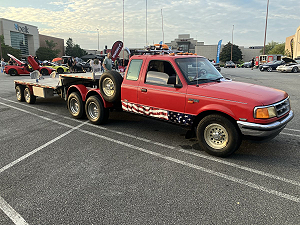- Joined
- Nov 28, 2021
- Messages
- 13
- Reaction score
- 1
- Location
- New Jersey
- Vehicle Year
- 1990
- Make / Model
- Ford Bronco II
- Engine Type
- 4.0 V6
- Transmission
- Manual
- 2WD / 4WD
- 4WD
Hi all, I'm working on an engine swap in my 1990 B2. I just replaced the main power relay with an aftermarket one (cut off the old one and spliced in the new one). However, when I turn the key to "run" the relay closes its contacts as it should, but when I set the key to "off" and take out the key the relay does not go back, it stays active. I have to disconnect the battery to reset the relay. I have found that the red wire with a light green stripe going to the relay coil from the ignition switch has a steady 3.41V. So I'm guessing the 3.41V is not enough to trigger the coil but enough to keep the contacts closed after it has been switched.
My main question is, is the constant 3.41V on this circuit supposed to be there? Also, where could it be coming from? I'm kind of stumped here on my project until I get this relay to operate properly.
Also, Upon investigation into the ignition switch there are many different wires with odd voltages when the key is off. So if someone could shed some light whether these are proper voltage readings I would be much appreciative.
I've attached photos and diagrams below. Thanks again for your help!





My main question is, is the constant 3.41V on this circuit supposed to be there? Also, where could it be coming from? I'm kind of stumped here on my project until I get this relay to operate properly.
Also, Upon investigation into the ignition switch there are many different wires with odd voltages when the key is off. So if someone could shed some light whether these are proper voltage readings I would be much appreciative.
I've attached photos and diagrams below. Thanks again for your help!














